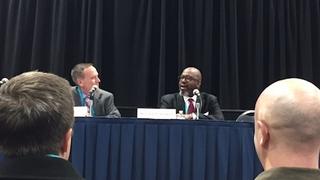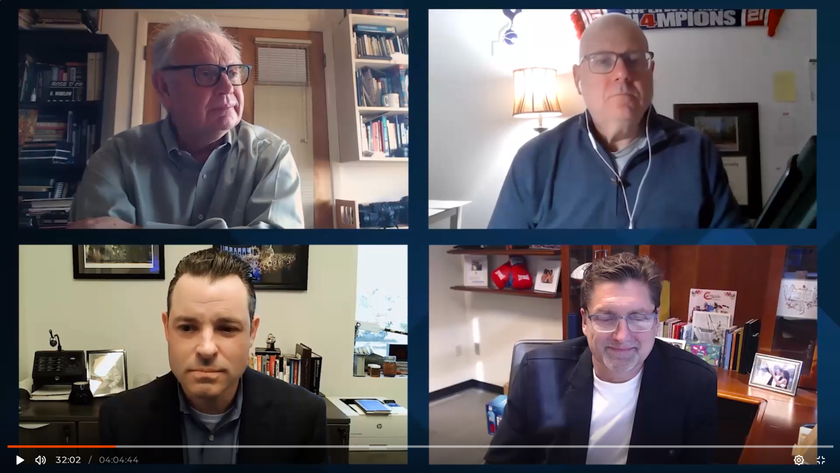GV Expo: Jenkins: PBS’ Next Goal is Live Next-Gen Transmission
WASHINGTON—Back in September, PBS conducted its first end-to-end test of next-gen video content of a recorded musical performance. Hosted by PBS’ Advanced Format Center at NPR, the transmission combined the UHD format with HLG10 HDR and DTS:X immersive audio. Renard Jenkins, vice president of PBS Operations, Production & Media Distribution, oversaw the test and labeled it a success.

“It took us a couple of days to get what we considered to be a success,” Jenkins told the audience at the 2016 Government Video Expo and National Drone Show during his Q&A session with TV Technology Editor-in-Chief Tom Butts. But once they got all the nuts and bolts right they were able to push the video out to two stations—in Jackson, Miss., and St. Paul, Minn.—and see the same signal on both ends.
Though Jenkins was not able to confirm when another test may take place, he acknowledged that more would occur as PBS will test a number of different technologies to determine how to cover all of PBS’ affiliate stations.
“Our stations cover the gamut. We have stations that are really leading edge and then we have stations that are still doing the standard HD,” Jenkins explained. “So we have to make sure that the current solution that we’re looking at will cover all of our stations.” He said that the decision to go with HLG10 and DTS:X for this particular test was more about timing than making a statement of where things are progressing.
However, Jenkins has bold plans for some of these future tests. “Right now the big hurdle for [the industry] is to try and do this HDR, HLG and all the other alphabets, to do this actually live. It will be a great benefit for those of us who actually do enjoy sports and it’s a place for the highest-quality and high-frame rate and all those wonderful things.”
There are a number of other elements that Jenkins discussed in his conversation on how PBS is preparing for next-generation technology. PBS’ headquarters in D.C. will be making a push to further explore what ATSC 3.0 could potentially offer, as Jenkins described the next-gen broadcast standard as “a new highway… a new way we that we can do a lot of things.” While Jenkins said that PBS has been bold in its ATSC 3.0 discussions, its individual stations will still determine when it adopts the standard.
PBS also is looking into what is the best way to do utilize HDR. The September test combined HDR with UHD, but there is talk that a higher resolution isn’t necessarily the most important thing. “UHD is a bigger screen, more pixels, but better pixels is what the real goal is,” Jenkins stated. Whether that goal can be reached using HD or UHD is what PBS will attempt to find out.
At the end of the day PBS is a public service that puts education as one of its top goals. These tests and evaluations of the new technology is a means to an end for providing more education to PBS viewers. “When I think about ATSC 3.0, immersive sound, VR, what all of these different things… what we are doing now is going to help us grow the education process,” said Jenkins.
Get the TV Tech Newsletter
The professional video industry's #1 source for news, trends and product and tech information. Sign up below.













